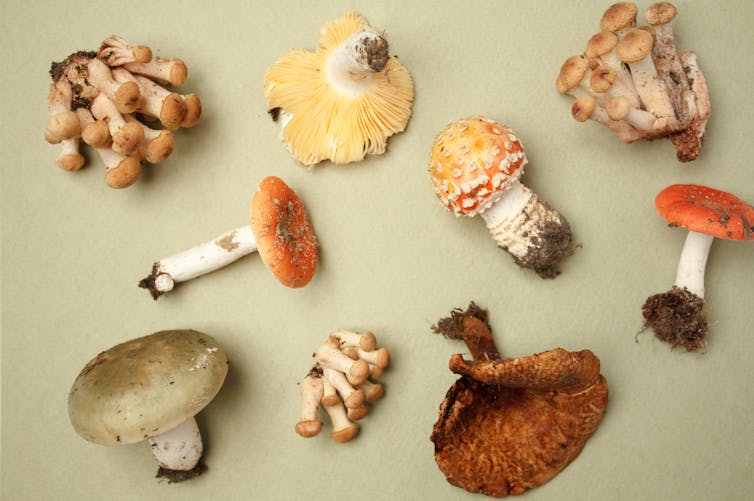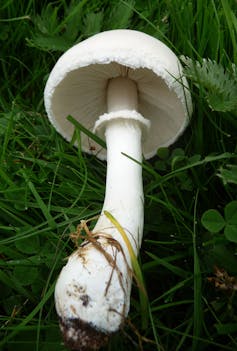Sheldon Publishes Research on Dung Beetles and Climate Change
Assistant Professor Kimberly Sheldon published results from a recent study in Biology Letters that suggest adult dung beetles may be changing their behavior to partially buffer developing offspring from temperature changes related to climate change.

Will Kirkpatrick, an undergraduate student researcher in the Sheldon Lab, ran the field component.




 For centuries, scientists have explored and documented the natural world, collecting the billions of specimens housed in museums, universities, and field stations worldwide. And now, the University of Tennessee and other institutions across the globe want to help make that information available to the general public.
For centuries, scientists have explored and documented the natural world, collecting the billions of specimens housed in museums, universities, and field stations worldwide. And now, the University of Tennessee and other institutions across the globe want to help make that information available to the general public.  “Natural history collections are a physical record of our planet’s biodiversity across space and time,” said Budke, who is also an assistant professor in the UT Department of Ecology and Evolutionary Biology. “These specimens not only serve as records of the past, but they are a critical resource for our future. They help us to answer important questions surrounding invasive species, conservation biology, and help us to describe species that are new to science.”
“Natural history collections are a physical record of our planet’s biodiversity across space and time,” said Budke, who is also an assistant professor in the UT Department of Ecology and Evolutionary Biology. “These specimens not only serve as records of the past, but they are a critical resource for our future. They help us to answer important questions surrounding invasive species, conservation biology, and help us to describe species that are new to science.” The WeDigBio Event emerged within the museum community to accelerate the rate of digital data creation about the historical what, when, and where of the perhaps 9 million species on Earth. It has a core leadership team that includes researchers from the Smithsonian Institution, the Australian Museum, Florida State University, University of Florida, and the major online transcription platforms, including the U.S.-based Smithsonian Transcription Center, Notes from Nature, and Symbiota, the Australia-based DigiVol, the UK-based Herbaria@Home, and the France-based Les Herbonautes.
The WeDigBio Event emerged within the museum community to accelerate the rate of digital data creation about the historical what, when, and where of the perhaps 9 million species on Earth. It has a core leadership team that includes researchers from the Smithsonian Institution, the Australian Museum, Florida State University, University of Florida, and the major online transcription platforms, including the U.S.-based Smithsonian Transcription Center, Notes from Nature, and Symbiota, the Australia-based DigiVol, the UK-based Herbaria@Home, and the France-based Les Herbonautes. This one-of-a-kind event will be held from October 14-17 at locations across the globe. Members of the public can contribute at any time from anywhere during the event at one of the participating online transcription platforms.
This one-of-a-kind event will be held from October 14-17 at locations across the globe. Members of the public can contribute at any time from anywhere during the event at one of the participating online transcription platforms.
 Kimberly Sheldon, an assistant professor in the Department of Ecology and Evolutionary Biology (EEB), was awarded a highly-competitive Faculty Early Career Development (CAREER) Award from the National Science Foundation (NSF). The award is NSF’s most prestigious recognition for early-career faculty members and recognizes individuals “who have the potential to serve as academic role models in research and education and to lead advances in the mission of their department or organization.”
Kimberly Sheldon, an assistant professor in the Department of Ecology and Evolutionary Biology (EEB), was awarded a highly-competitive Faculty Early Career Development (CAREER) Award from the National Science Foundation (NSF). The award is NSF’s most prestigious recognition for early-career faculty members and recognizes individuals “who have the potential to serve as academic role models in research and education and to lead advances in the mission of their department or organization.” Insects might compensate for temperature increases by shifting their behavior to use cooler microclimates within their environment. Sheldon’s research team will spend the next five years investigating how dung beetles in Tennessee and Ecuador respond to warmer and more variable temperatures and how that behavior impacts their offspring’s development and survival.
Insects might compensate for temperature increases by shifting their behavior to use cooler microclimates within their environment. Sheldon’s research team will spend the next five years investigating how dung beetles in Tennessee and Ecuador respond to warmer and more variable temperatures and how that behavior impacts their offspring’s development and survival. Jessica Budke, an assistant professor in the Department of Ecology and Evolutionary Biology (EEB) and director of the
Jessica Budke, an assistant professor in the Department of Ecology and Evolutionary Biology (EEB) and director of the  Using field-collected plants and natural history specimens, Budke will use an innovative and integrated research approach that incorporates comparative analysis of function morphology, physiology, and evolution to explore and understand the processes that have led to diverse adaptations for regulating parental-offspring resource allocation across species.
Using field-collected plants and natural history specimens, Budke will use an innovative and integrated research approach that incorporates comparative analysis of function morphology, physiology, and evolution to explore and understand the processes that have led to diverse adaptations for regulating parental-offspring resource allocation across species. Budke and her students will use the experiences and data from the course to build educational modules and activities for UT programs at natural history museums and local public botanical gardens. They will host sessions about mosses and specimen research for students grades 3-12 and will build an educational module for the UT Biology in a Box program to engage kids with natural history collections and moss biology.
Budke and her students will use the experiences and data from the course to build educational modules and activities for UT programs at natural history museums and local public botanical gardens. They will host sessions about mosses and specimen research for students grades 3-12 and will build an educational module for the UT Biology in a Box program to engage kids with natural history collections and moss biology.



